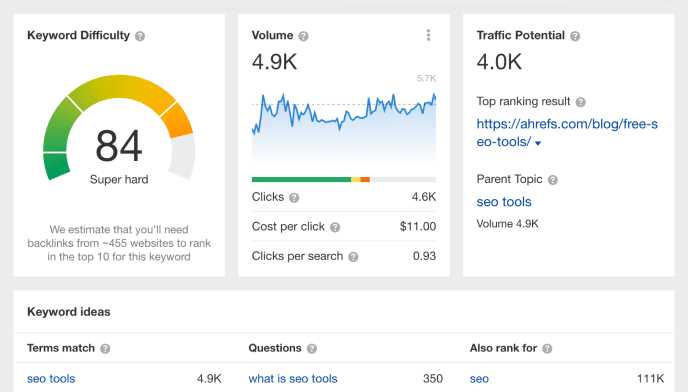
AIOs: Should you be worried about the impact on organic search?
Written by Gabrielle
Should you be worried about the impact on organic search?
I’ve found LinkedIn to be rather a relentless place in the last few weeks. Ever since Ahrefs published the doom-and-gloom headline ‘AI Overviews Reduce Clicks by 34.5%’, post after post has had marketers *screaming* about Google AI overviews (AIOs). If you’re involved in SEO, it’s certainly a headline worth stopping scrolling at, but the amount of noise it’s generated has been a LOT.
So let’s take a minute to look at what we know and try to piece together the puzzle of what all this really means for your brand’s website – and how worried you should or shouldn’t be about the impact on organic search.
what's the issue with aios?
AIOs are mainly taking the flak for reducing the number of clicks through to a website. So it goes that fewer users = fewer awareness = fewer leads = fewer conversions = world ends…
…right? Well, there’s long been an argument around quantity VS quality of users, but you’ll always need users on your site to boost awareness of your brand, products, services – and generate those all-important leads.
So with AIOs reducing the amount of people clicking through* to your website by a hefty 34.5%, there is a case to be worried. (*Where an AIO is shown above the organic results.)
But.

There’s also a case to be positive. If content from your site appears in an AIO, clicks may be down but your good friend, impressions, will be up. The more users seeing your content, the more awareness of your brand, products, services – and the more likely users are to remember or recognise your brand in a day, week, month’s time when they’re in a position to get in touch or make a purchase.
Search performance metrics are what you make of them, and the story is never as black-and-white as ‘revenue is up MoM so everything’s well, the end’ or ‘overall sessions have dropped this week so we should disregard the fact this is an anomaly and sack off the marketing team’.
The same goes for this AIO panic.
what we now know about ai overviews
On average, six sources of information are referenced in a typical AI overview. Anchor links are given for each ‘claim’, with links to the webpage(s) where the information was sourced. According to SEO consultant Barry Adams, this means nearly one in five of all results for Google searches will show an AIO in the UK. Mr Adams also says this fraction is probably going to grow as ‘Google’s confidence in AI Overviews increases’.

aios strategy
This in mind, we’ve had a lot of search-savvy clients piping up with questions about AIOs. Namely, things like:
- What’s the impact of AIOs on overall site performance?
- Should we be worried about a reduced CTR?
- How many AIOs are we appearing in?
But the biggest question sent our way revolves around using AIOs to our advantage. I.E. What’s our strategy for appearing in AI overviews?
One of our values at Flaunt Digital is transparency. But we can’t be giving all of our content marketing strategies away now…
…can we?
No, we can’t or I’ll be out of a job. But what we can share, however, are the talking points that will help you shape your AIO strategy.
(And remember, if you’d like to speak in more detail about leveraging AIOs and search for your business, we’re only a phone call or email away.)
Contact usHow to shape your AI overview strategy
Here’s three things I’m considering when shaping AIO strategies for clients – and what you might want to, too.
Ask yourself, ‘What’s important?’
Every website has different KPIs. For instance, a B2C fashion site is likely to place waaaay higher importance on metrics like conversion rate and revenue than a B2B SaaS site – they’ll probably be more interested in page engagement time and number of key events, for instance. So you need to figure out how detrimental clicks to your website going down is, and balance this against impressions going up.
In the example above, I’d say the B2C brand should be prioritising stabilising CTR more than the B2B brand. After all, the fashion site’s primary purpose is to generate revenue – and to do that, you need users on site.
On the other hand, the B2B brand is in a better position, arguably, to take the hit in clicks but continue to reap the rewards of increased impressions. Producing content that’s optimised to appear in AIOs (e.g. FAQs that target longer-tail keywords, content that states facts and figures) should be a focus to continue broadening awareness of the brand and working to get clicks through to the site from other means.
(Fancy more B2B VS B2C insight like this? Read: b2b vs b2c: what marketers can learn from both.)
Run an AIO audit
It’s also worth checking which AIOs your site currently appears in (if any). Tools like SEOMonitor were hot off the mark in rolling out features to help you understand if you’re appearing and where opportunities lay.
SEOMonitor now has a nifty little diamond next to keywords where an AI overview has been detected, and:
- If the diamond is dark purple (on a light purple background), you get the rather disappointing note that ‘your website is neither linked nor mentioned’. Sad times.
- If it’s white (on a purple background), you get the affirmation that your website ‘is present in the widget’. Hi-5!

Understanding what your site is appearing – or not appearing – for in AIOs gives you even more context on how useful Google’s finding your content, and the types of query your target audience are searching for. (And on the off-chance you’re appearing in results for search queries you’d rather avoid, you’ve also got the insight to make necessary changes to content, too. Though didn’t Piers Morgan once say to Cheryl Cole ‘any publicity is good publicity?’)
Test, tweak, trial
AIOs have been in Google SERPs for almost a year now, and like with any Core Update or new feature release, there’s an awful lot of testing, tweaking, and trialling to be done. And it shouldn’t stop – SEO is an ongoing experiment, and the rules really can change overnight.
Performance metrics aside, the only way you’re really going to understand the impact of AI overviews on your site’s visibility in organic search is to try it out.
- Research the types of query AIOs appear for in your industry.
- Understand the content these AIOs are linking to – are they landing pages, answers to FAQs, somewhere else altogether?
- Choose a cluster of keywords you’d like to target an AIO for, and use your research to give it an intelligent go.
After all, clicks to site have already dropped 34.5%, so what’s the worst that could happen?
For more thoughts on AIO’s, the future of search, or general multi-platform SEO goings-on, please contact us. We’d love to hear from you!





